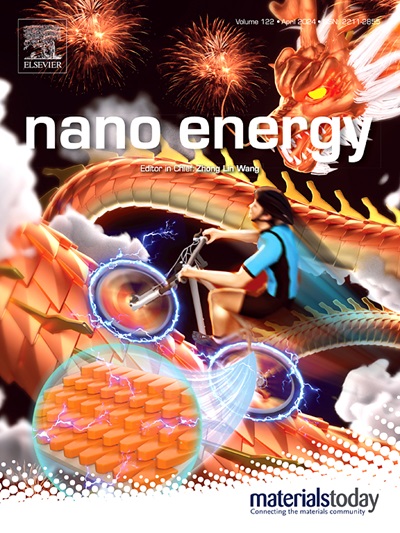Intra or extracellular: The location of piezotronic effect determines the polarization regulation of macrophages for enhanced wound healing
IF 16.8
1区 材料科学
Q1 CHEMISTRY, PHYSICAL
引用次数: 0
Abstract
With the rapid advancement of interdisciplinary research, regulating cell fate with the piezotronic effect of nanomaterials has garnered significant attention. Ultrasound-driven piezotronic effect has been shown to induce polarization of macrophages, but conflicting findings in some studies have highlighted uncertainties in the polarization regulation mechanisms. These ambiguities pose challenges for applying the piezotronic effect to regulate the immuno-microenvironment in macrophage-related therapies. Commonly, the natural endocytic capability of macrophages was found to facilitate the internalization of barium titanate nanoparticles (BTO NPs), resulting in the production of reactive oxygen species (ROS) and the induction of macrophage M1 polarization in the acidic lysosomal environment under ultrasound treatment. To prevent NPs internalization and enable surface interactions, in this study, BTO NPs were assembled onto graphene oxide nanosheets to form hybrid piezoelectric nanosheets (GO-BTO NSs). The internalized BTO NPs did promote the M1 polarization of macrophage. In contrast, GO-BTO NSs attached to the macrophage surface generated piezoelectric potential through piezotronic effect under ultrasonic stimulation, leading to M2 polarization of macrophage, meaning that BTO NPs exhibited distinct polarization regulation abilities under intracellular and extracellular stimulation modes. The mechanism underlying ultrasound-driven M2 polarization induced by GO-BTO NSs was further identified, with the Akt2-IRF5/NF-κB signaling pathway being inhibited via piezotronic effect by GO-BTO NSs adhered to the macrophage surface, thereby inducing M2 polarization. Animal experiments demonstrated that ultrasound irradiation combined with GO-BTO NSs significantly accelerated wound healing. This study elucidates the distinct regulatory mechanisms of macrophage polarization under different locations of piezotronic effect, providing a theoretical foundation and practical methodology for the application of piezoelectric materials in cell fate regulation and cell therapy.

求助全文
约1分钟内获得全文
求助全文
来源期刊

Nano Energy
CHEMISTRY, PHYSICAL-NANOSCIENCE & NANOTECHNOLOGY
CiteScore
30.30
自引率
7.40%
发文量
1207
审稿时长
23 days
期刊介绍:
Nano Energy is a multidisciplinary, rapid-publication forum of original peer-reviewed contributions on the science and engineering of nanomaterials and nanodevices used in all forms of energy harvesting, conversion, storage, utilization and policy. Through its mixture of articles, reviews, communications, research news, and information on key developments, Nano Energy provides a comprehensive coverage of this exciting and dynamic field which joins nanoscience and nanotechnology with energy science. The journal is relevant to all those who are interested in nanomaterials solutions to the energy problem.
Nano Energy publishes original experimental and theoretical research on all aspects of energy-related research which utilizes nanomaterials and nanotechnology. Manuscripts of four types are considered: review articles which inform readers of the latest research and advances in energy science; rapid communications which feature exciting research breakthroughs in the field; full-length articles which report comprehensive research developments; and news and opinions which comment on topical issues or express views on the developments in related fields.
 求助内容:
求助内容: 应助结果提醒方式:
应助结果提醒方式:


